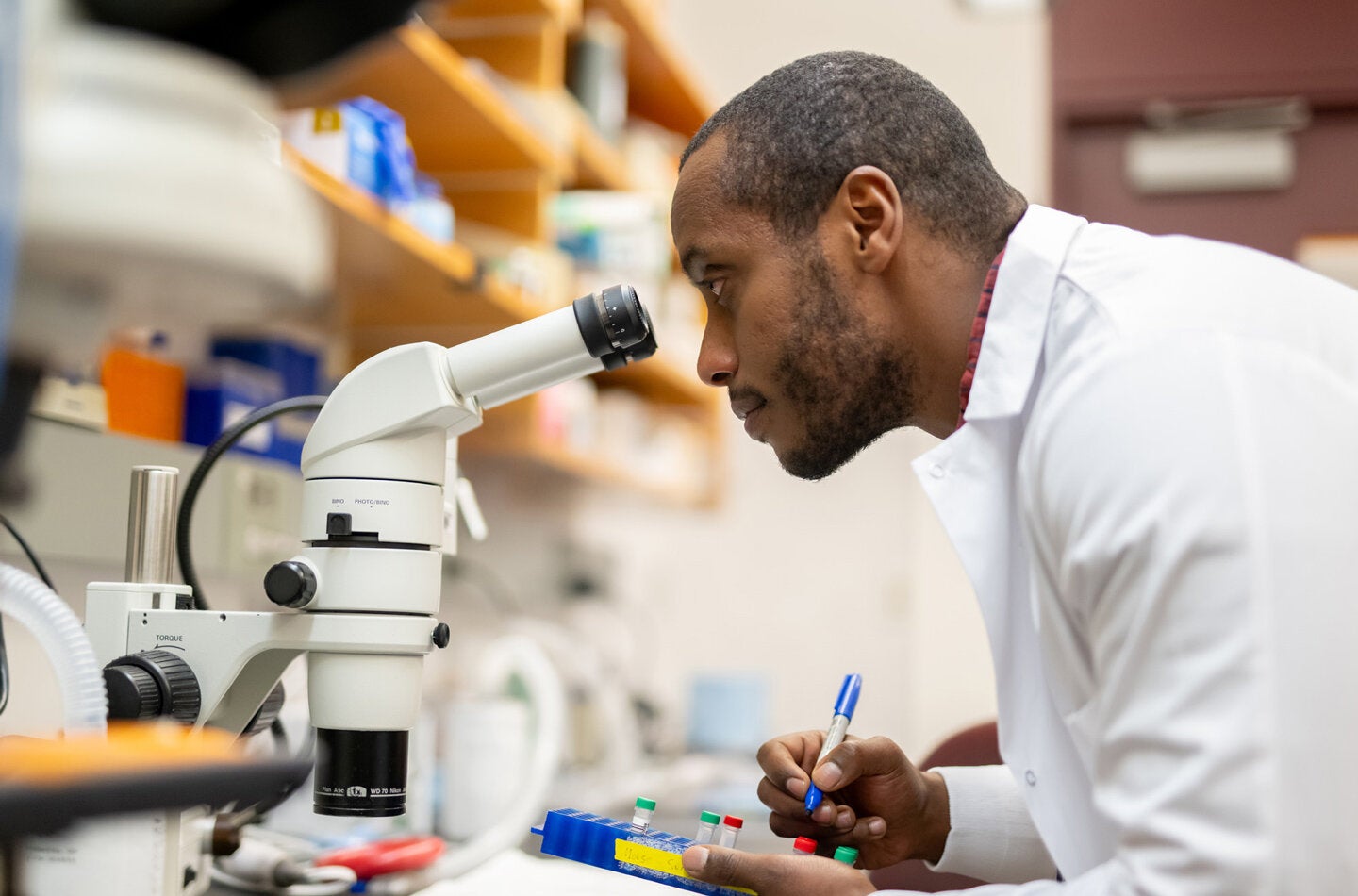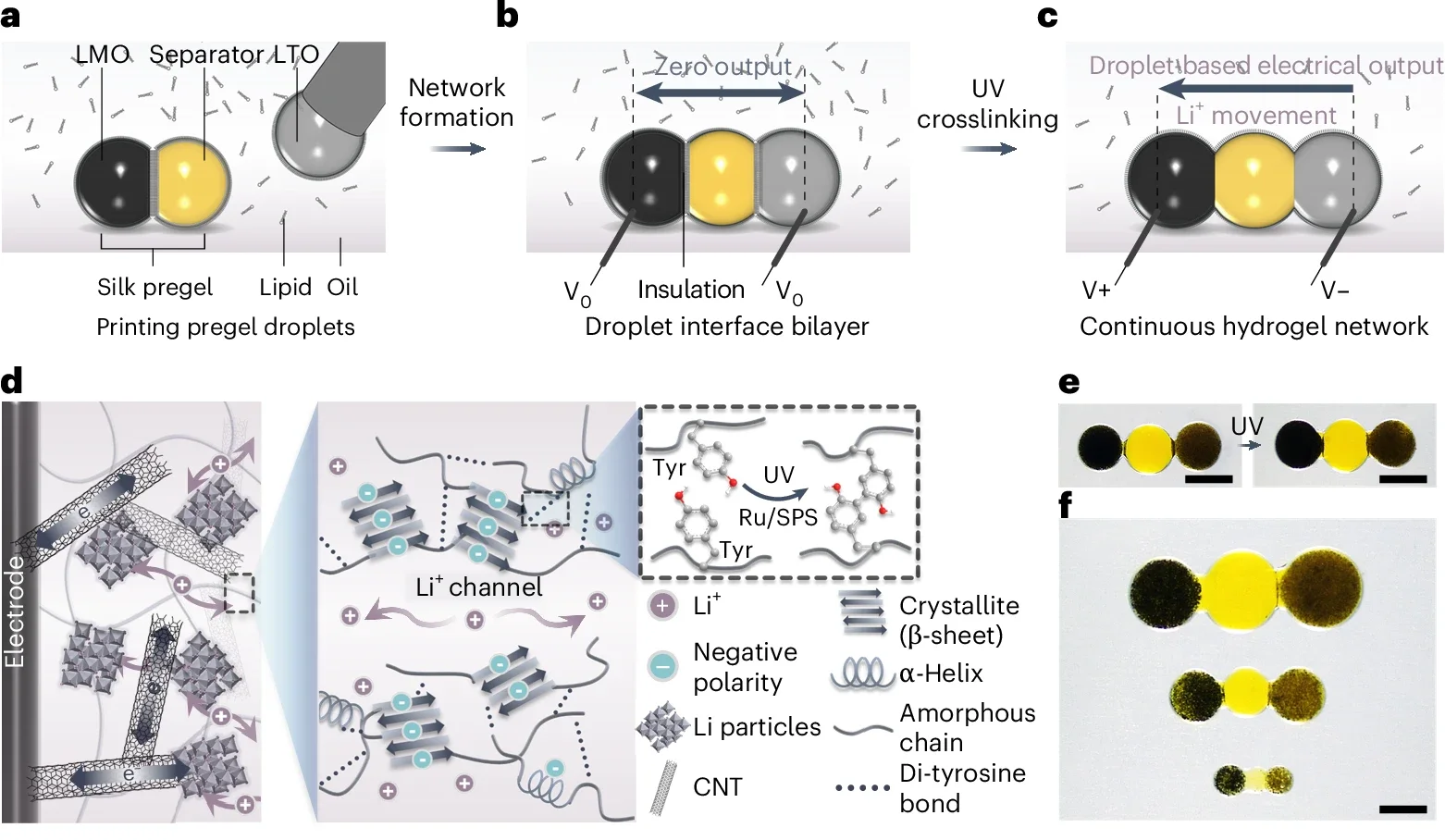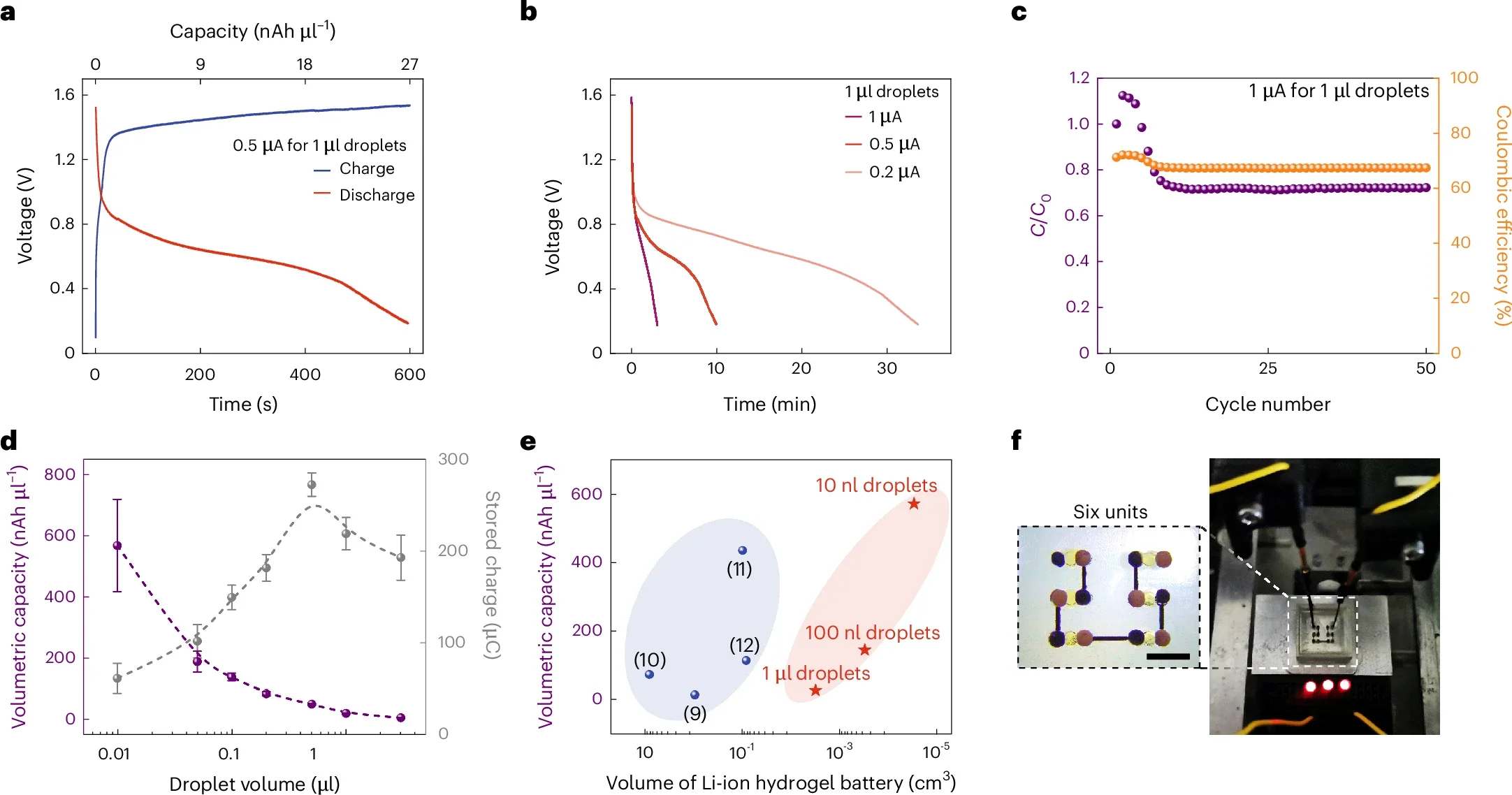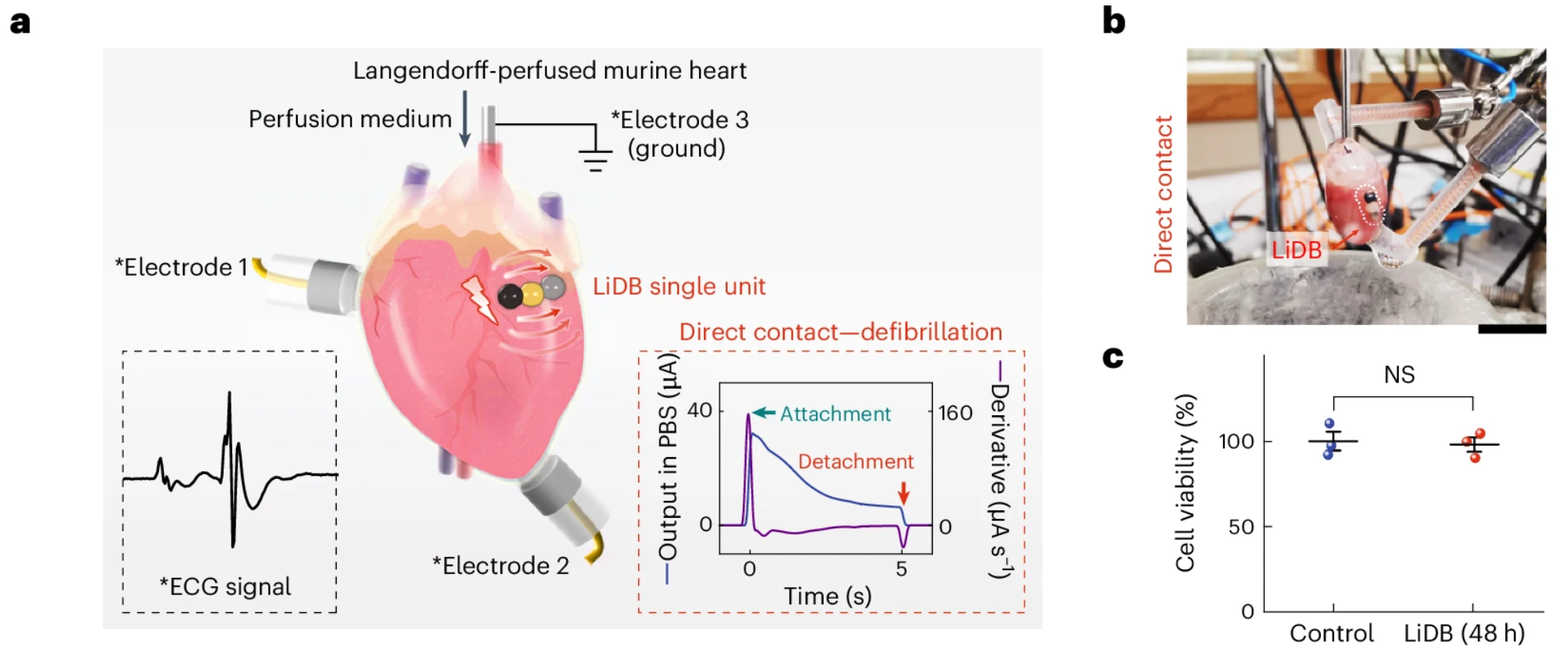Tiny droplets are powering big ideas in science. Researchers have developed a miniature, soft, and flexible lithium-ion battery made from biocompatible hydrogel. This new battery, smaller than a grain of rice, can do more than just store energy—it can power living tissues, support synthetic cells, and even move on its own.
The breakthrough comes as the world races to make electronics smaller, softer, and safer for the human body. Think of medical devices that can enter your body, help your heart, and vanish without a trace. That’s the future this research is shaping. It all starts with the tiniest parts—down to droplets just 10 nanoliters in size.
As devices get smaller, their power sources need to shrink too. Traditional batteries are rigid, bulky, and made with materials that can’t safely mix with living tissues. For use inside the body, batteries must be flexible, soft, safe to absorb or remove, and preferably disappear on their own after doing their job.

The new lithium-ion droplet battery—called LiDB—meets all those goals. It’s soft, rechargeable, biodegradable, and can be activated by light. It’s also the smallest hydrogel lithium-ion battery ever made, and it delivers more energy per volume than previous soft batteries.
Scientists at the University of Oxford created this battery using a silk-based hydrogel. The hydrogel droplets are assembled using a special surfactant (surface-active agent), which acts like a soap to help join the pieces together.
Each battery is made from three droplets. The two outer droplets contain different lithium-based particles, and the central droplet acts as the connector, allowing ions to move and produce electricity.
Don’t let the small size fool you. This little battery is full of potential.
Related Stories
It has already been used to power the movement of charged molecules between artificial cells—something that mimics communication in biological systems. In another experiment, it controlled the beating and defibrillation of a mouse heart outside the body. This shows how the battery might one day help manage real heart conditions.
Dr. Yujia Zhang, the lead researcher from Oxford’s Department of Chemistry, explained: “Our droplet battery is light-activated, rechargeable, and biodegradable after use. To date, it is the smallest hydrogel lithium-ion battery and has a superior energy density.”
She added that by adding magnetic particles to the battery, it could move through a fluid environment. “The battery can also function as a mobile energy carrier,” she said.
This means that future versions of the battery could travel inside the body, reaching specific spots to deliver power exactly where it’s needed. It could power a tiny robot or release medicine in response to signals from its surroundings.

One of the most exciting uses of this battery is in treating heart conditions.
Heart rhythm disorders, known as arrhythmias, are one of the top causes of death around the world. Treatments like pacemakers and defibrillators help control heartbeats, but they rely on large and long-lasting batteries. These can’t always be used in small or temporary procedures, and replacing them requires surgery.
Professor Ming Lei from Oxford’s Department of Pharmacology tested the new droplet battery on mouse hearts. He showed that it could pace and defibrillate heart tissue wirelessly. “Cardiac arrhythmia is a leading cause of death worldwide,” said Lei. “Our proof-of-concept application in animal models demonstrates an exciting new avenue of wireless and biodegradable devices for the management of arrhythmias.”
This test shows that soft, tiny batteries could one day replace bulky implants. Since the battery can disappear safely, it wouldn’t need to be removed once it’s done working.
The LiDB is more than just a lab project—it’s a glimpse into a future where soft, smart devices could go inside the body to fix problems from the inside out.
The battery was developed by teams from Oxford’s Departments of Chemistry and Pharmacology, and the results were published in Nature Chemical Engineering. It builds on work reported by the same group last year in Nature, where they described how surfactants helped connect droplets into larger, working systems.
This new work takes things further by creating a real battery system that can recharge, respond to light, and move when directed. It’s also one of the few soft power sources that offers high energy output without compromising safety.

Professor Hagan Bayley, who leads the chemistry lab at Oxford, praised the development. “The tiny soft lithium-ion battery is the most sophisticated in a series of microscale power packs developed by Dr. Zhang and points to a fantastic future for biocompatible electronic devices that can operate under physiological conditions,” he said.
Researchers have already filed a patent for the battery and are working through Oxford University Innovation to bring it closer to real-world use. They believe it will open new possibilities in medicine, especially for small-scale robots and temporary implants.
This kind of battery could power tiny robots that crawl through blood vessels, sensors that detect illness early, or even single-use medical devices that dissolve when they’re done. The fact that the battery is made of silk-based hydrogel means it’s not only gentle on tissues but also made from a material that breaks down safely in the body.

In the future, soft electronics like this could make surgeries less invasive, reduce the need for repeat operations, and personalize treatments to the exact needs of each patient.
And since the battery responds to light and magnets, it could be steered and controlled without wires or surgery.
From pacing a heartbeat to helping synthetic cells mimic life, this small battery shows how science is making the impossible seem normal. Its design marks a big leap forward in how we think about powering devices—not with big batteries or heavy machines, but with tiny, smart, and soft systems that disappear when their work is done.
Note: The article above provided above by The Brighter Side of News.
Like these kind of feel good stories? Get The Brighter Side of News’ newsletter.
The post Smallest-ever, rechargeable, lithium battery powers living tissues and synthetic cells appeared first on The Brighter Side of News.
Leave a comment
You must be logged in to post a comment.